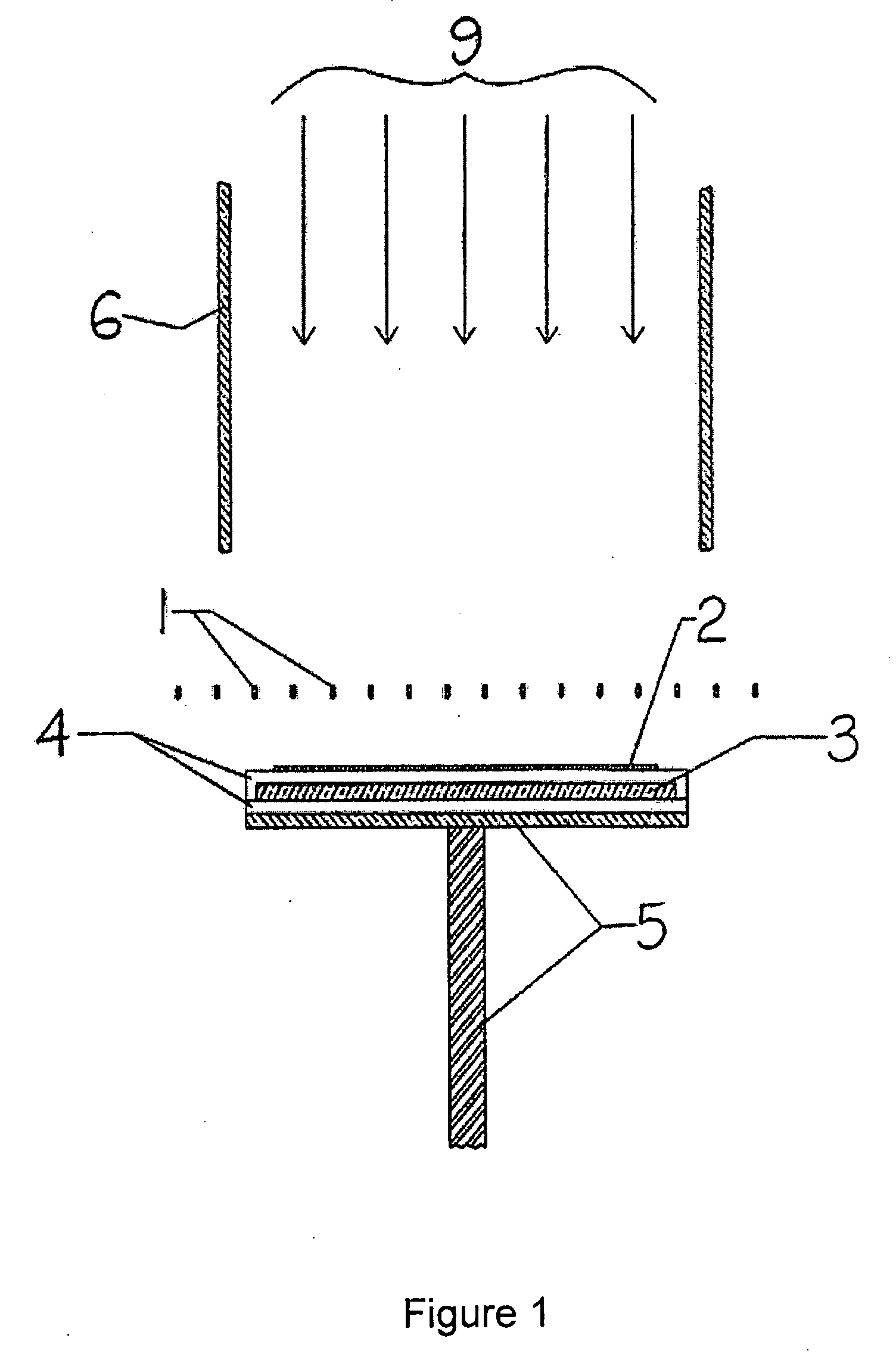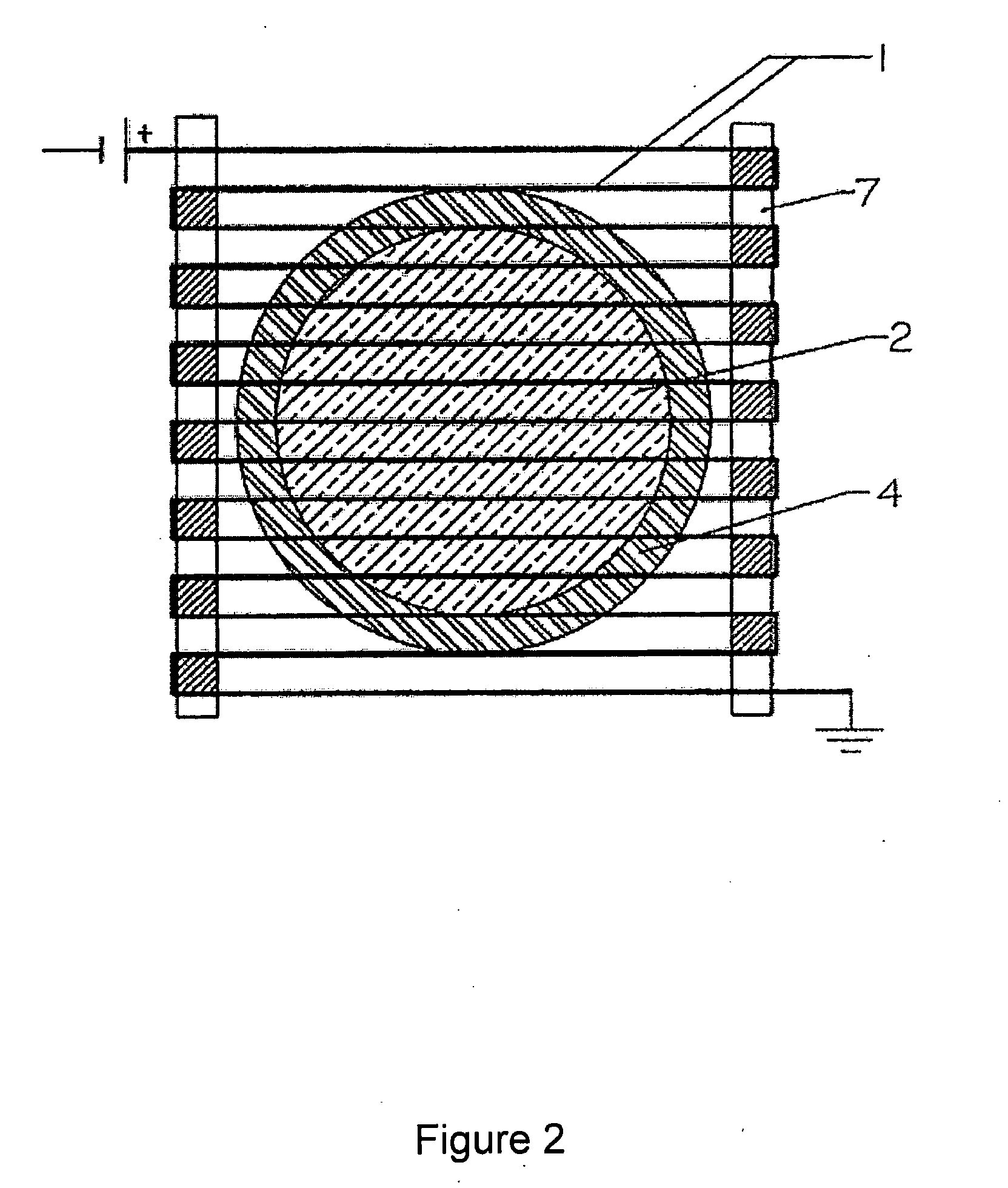Production of bulk silicon carbide with hot-filament chemical vapor deposition
a technology of chemical vapor deposition and silicon carbide, which is applied in the direction of solid-state diffusion coating, crystal growth process, electric/magnetic/electromagnetic heating, etc., can solve the problem of high temperature required for boule formation, high unintentional carrier concentration of material, and many quality issues pertaining to boule formation. problem, to achieve the effect of sufficient thickness
- Summary
- Abstract
- Description
- Claims
- Application Information
AI Technical Summary
Benefits of technology
Problems solved by technology
Method used
Image
Examples
Embodiment Construction
[0047]Methods and systems are described for the deposition of bulk silicon carbide (SiC) boules using hot-filament chemical vapor deposition (HFCVD).
[0048]As depicted in FIG. 1, HFCVD techniques involve the passing of gas precursors 9 across heated filaments 1, where the precursors decompose into reactive intermediates which react with the heated substrate surface 2. Hot-filament chemical vapor deposition (HFCVD) allows the temperatures of the filaments and the substrate to be independently adjusted to permit the growth of large-scale SiC boules. Because the gas-phase temperature can be decoupled from the substrate, the substrate temperature can be reduced relative to sublimation, yielding materials with lower stress defects following a return to ambient temperature. The reduction in overall temperature variation from the chamber's deposition temperature to room temperature for additional processing can substantially reduce stress related defects in the boule. The ability to grow bo...
PUM
| Property | Measurement | Unit |
|---|---|---|
| diameter | aaaaa | aaaaa |
| thickness | aaaaa | aaaaa |
| thickness | aaaaa | aaaaa |
Abstract
Description
Claims
Application Information
 Login to View More
Login to View More - R&D
- Intellectual Property
- Life Sciences
- Materials
- Tech Scout
- Unparalleled Data Quality
- Higher Quality Content
- 60% Fewer Hallucinations
Browse by: Latest US Patents, China's latest patents, Technical Efficacy Thesaurus, Application Domain, Technology Topic, Popular Technical Reports.
© 2025 PatSnap. All rights reserved.Legal|Privacy policy|Modern Slavery Act Transparency Statement|Sitemap|About US| Contact US: help@patsnap.com



